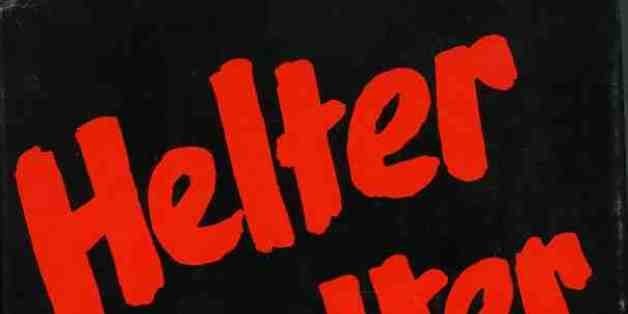
Lately, I have had a horrible time getting to sleep. Last night, the anxiety was so bad that I had to put on an Audrey Hepburn movie on Netflix to calm my terrifying thoughts.
Why is this going on? Stress at work? Trouble with my family? Nope, it's because I'm currently reading Truman Capote's classic, In Cold Blood, and it is scaring the hell out of me.
I openly admit that I'm probably not the ideal reader of True Crime books; I definitely think about getting murdered more than the average person does, and my overactive imagination and extreme anxiety don't make matters any better.
What is it about the True Crime genre that keeps me coming back for more, even though these stories petrify me?
The truth is, I can't help it; the suspense reels me in. Who are these people who can take a life without thinking twice about it? Why are they the way they are?
Whether or not you're as anxious and jumpy as me, I can guarantee that these books will leave you keeping the hall light on all night and/or locking every single lock on your door at night:
In Cold Blood by Truman Capote: Capote's classic is about the murders of four members of the Clutter family. In 1959, two men broke into the Clutter house, tied them up and shot them, one by one. Not only was the method of the murders brutal, but the criminals remained pretty much remorseless the whole time. The murders also ended up being motiveless. Though the break-in began as a robbery, there was very little money to be found (under 50 dollars), but they killed everyone any way. There have been some discrepancies between fact and Capote's outline of what happened, but the facts of the murders remain true. The two men were executed for their crimes.
Helter Skelter by Vincent Bugliosi: Helter Skelter was written by Charles Manson's prosecutor, about both the case and the trial. That Manson managed to convince a group of people to perform a series of murders for him is chilling in and of itself. These murders were also extremely brutal - this book is not for the faint of heart. Sharon Tate (one of the murder victims) was stabbed 16 times and was two weeks away from giving birth to her child. Manson received the death penalty, but it was eventually outlawed in California. He is currently serving life imprisonment.
Fatal Vision by Joe McGinniss: In 1970, Jeffrey MacDonald was discovered slightly injured, and his pregnant wife and two young daughters were found murdered. MacDonald claimed that assailants had broken in, wounded him, and knocked him unconscious while they murdered his family. However, since there was no evidence of a break-in or any that anyone else had been inside the home, MacDonald ended up being tried for the murders. Though MacDonald maintains his innocence, the thought that a father could potentially murder his pregnant wife and two small children is absolutely terrifying. (This is another book with discrepancies. MacDonald had thought the book would prove his innocence, but instead it makes it appear that he is definitely guilty. Both Janet Malcolm and Errol Morris have written response books to McGinniss's bestseller. It still makes a horrifying read, though).
Gomorrah by Roberto Saviano: Campania, a region of Naples, Italy, has one of the highest murder rates in Europe. This is due to the Camorra, a Neapolitan mafia-like organization. The book traces the decline of Naples under the corruption of the organization, and also goes into the brutal details of how Comorra is run, and the lengths it will go to. Since 1979, 3600 people have been murdered at the hands of the Comorra, and the details of the deaths are gruesome.
The Stranger Beside Me by Ann Rule: When Ann Rule was assigned to write a book about the as-of-yet unsolved murders of multiple women, she had no idea that the culprit would end up being someone she knew. When Ted Bundy was arrested and tried for the murders, Rule was so shocked that she hurried "to the ladies room and [threw] up." It turns out that she knew Bundy when they worked together at a suicide hotline; they were friends. It doesn't get much more unnerving than that.
For the Thrill of It by Simon Baatz: In 1924, Nathan Leopold and Richard Loeb, two graduate students from wealthy families, kidnapped and murdered a 14-year-old boy. Psychiatrists testified that the two would actually have been harmless on their own, but combined, they were a toxic pair. One of the psychologists on the case noted, "There seems to have been so little normal motivation, the matter was so long planned, so unfeelingly carried out, that it represents nothing that I have ever seen or heard of before."
Columbine by Dave Cullen: Cullen's nonfiction work about the Columbine mass shooting covers two topics: the killers' lives preceding the attack, and the survivors' struggles with the aftermath of the tragedy. There are also graphic depictions of the shooting. The book addresses many myths associated with Columbine. According to the author, the massacre had nothing to do with bullying, goth culture or Marilyn Manson. It is even more chilling when Cullen discusses that the attack was not initially intended as a shooting, but rather as a bombing. The shooters had wanted to create the worst terrorist attack in American history.
A Mind for Murder by Alston Chase: Chase's book describes the life of Ted Kaczynski, the Unabomber, who, from 1978 to 1995, sent 16 bombs to targets including universities and airlines, killing three people and injuring 23. Chase argues that Kaczynski wasn't the wild mountain man that the media assumed him to be and that, though Kaczynski was a cold-blooded killer, his ideas were actually pretty close to those of mainstream America.
The Last Victim by Jason Moss: This book deals with not one, but five serial killers. Moss explores his fascination with the psychology of serial killers and begins to correspond with several of America's most infamous ones as part of his honors thesis in college: John Wayne Gacy, Richard Ramirez, Henry Lee Lucas, Jeffrey Dahmer, and Charles Manson. He formed the strongest relationship with Gacy (who sexually assaulted and killed at least 33 teen boys and young men between 1972 and 1978). Gacy maintained his innocence to Moss. The book gets its title in what is ultimately the most chilling aspect of the book: when Moss goes to visit Gacy, Gacy tries to murder him.
